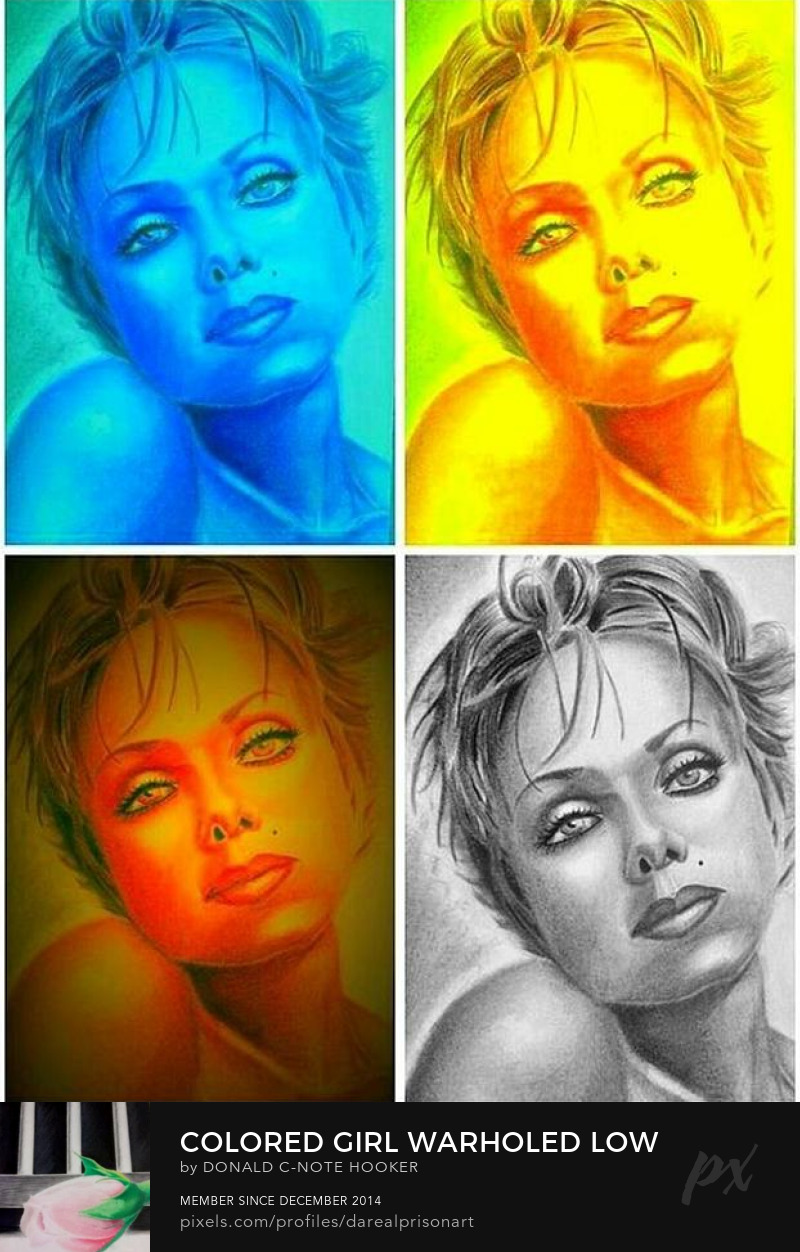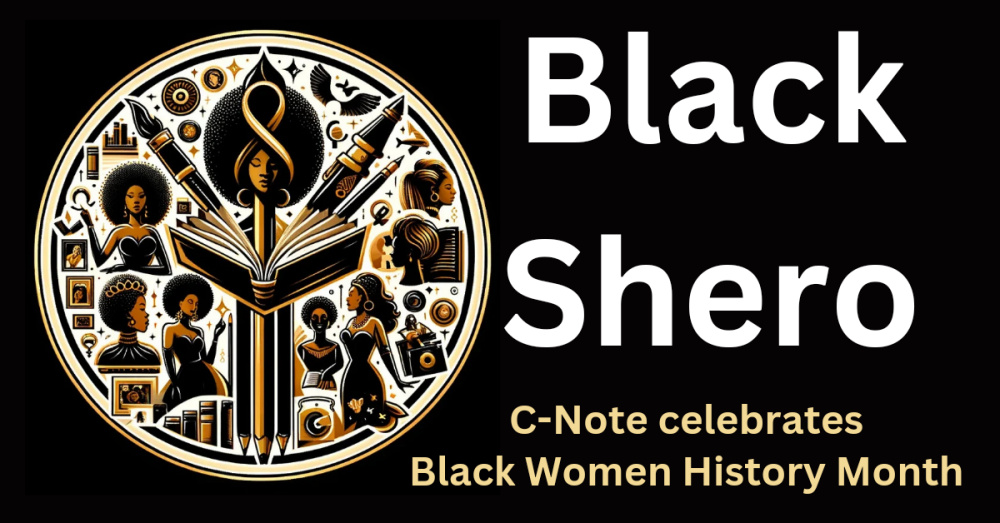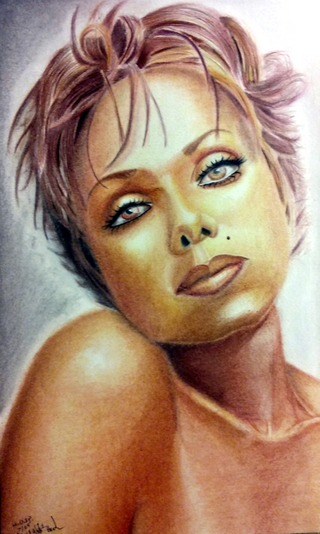
Colored Girl stands out for inspiring nine spin-offs, including Colored Girl Warholed showcased on a billboard during the Omicron outbreak in winter 2021, bringing hope and beauty to public spaces.
In 2001, the music scene was lit up by hip hop artist Eve’s anthem “Who’s That Girl” from her album Scorpion. Fast forward to 2009, Donald “C-Note” Hooker, amidst a vastly different cultural environment and without the social media platforms of today to amplify Black women’s voices, created Colored Girl, a tribute to the beauty and resilience of Black women. At a time when shows like Girlfriends had just concluded and discussions on racial justice were not as prevalent, this artwork provided a narrative counterpoint to the negative stereotypes surrounding incarcerated Black men.
Despite being created within the confines of a prison known for its challenging conditions and culture of racism, Colored Girl emerged as a beacon of creativity and expression. In a 2016 interview with Darealprisonart, C-Note shared insights into his creative process and the accidental beauty that birthed this piece, highlighting the complexities of racial terminology and the positive reception it received for its empowering representation of Black women.
DRPA: Now we asked you to bring some art, you initially only brought two pieces, and then went back and grabbed four more, why was that?
C-Note: Well, I thought about it, and these other pieces would add to the richness of the conversation and let you know what kind of work I do and how I utilize these works.
DRPA: So what piece would you like to start off with first?
C-Note: “Colored Girl (Highlighted)“
DRPA: I notice it’s a print, and it’s called “Highlighted,” does that mean there is more to this piece?
C-Note: Yes, I still have the original that I hope to give and have exhibited in the National Museum of African American History and Culture, on the National Mall, in Washington D.C.. It’s a very significant piece, for one, it’s a very beautiful piece. It is a piece, and its beauty was made by accident. In other words, I have no clue how it came about. I work in a medium that doesn’t get recognized, I work in wax. So I put all this different kind of wax together and different formulae to dissolve the wax on paper. I had a model. A picture out of a magazine. But I’m not confident as an artist so I don’t want people to compare my finished product to the model or image that I used. I called it “Colored Girl.” I think it fits. It’s clearly a coloration of something, of a woman. But the word “Colored,” though it is a pejorative today, was once known as the desired description that African Americans prefer to be described as. “Colored,” “Negro,” “Black,” these were all terms that African-Americans themselves demanded of the press and white audiences; this is what you call us. An example would be W. E. B. Dubois NAACP. It was originally called the National Negro Committee. Booker T. Washington and other famous black activists before him, demanded that whites call us “Negroes.” So three years after founding the National Negro Committee, W. E. B. Dubois changed the name to the National Association for the Advancement of Colored People. That’s proof enough that blacks demanded that they be called “Colored.” So “Colored Girl,” what is that? Any black girl, and that’s pretty much the response that I have gotten from this piece. It’s funny because I used a famous person for this piece, but for my own insecurities I never named the person in this piece and all sorts of blacks swear on a stack of Bibles they know who this person is. I hear the names “Vanessa Williams,” “Janet Jackson,” “Eva Pigford,” all across the spectrum. When blacks see the piece, when I show the original, they just get animated. They just light up. There is this spiritual thing that goes on, we begin to communicate telepathically with one another. African Americans have a general complaint that there is a dearth of positive images of them, so there is this silent communication between me and others that this is what that is. So an accidental discovery, “the piece,” and the title, does what it is intended to do, any “Colored Girl.”
DRPA: Wow, that’s quite a story there.
C-Note: Ah, but it’s just one.
The journey of Colored Girl didn’t stop with its initial creation. By 2015, it had inspired a series of digital artworks, each capturing different facets of Black femininity, drawing from Andy Warhol’s pop art influence, especially evident in Colored Girl Warholed. These spin-offs, including Colored Girl Bathed In Light and Colored Girl in Blue, further diversified the portrayal of Black women in art.
In winter 2021, amidst the Omicron variant surge, Anna D. Smith brought Colored Girl Warholed into the public eye through the “Look Up!” 2, Hope & Beauty Billboard Art Exhibition and Art Sale in Santana Row, Silicon Valley. This outdoor exhibition not only adapted to the pandemic’s constraints but also reached a broad audience, highlighting the enduring impact of Colored Girl and its ability to inspire and uplift.
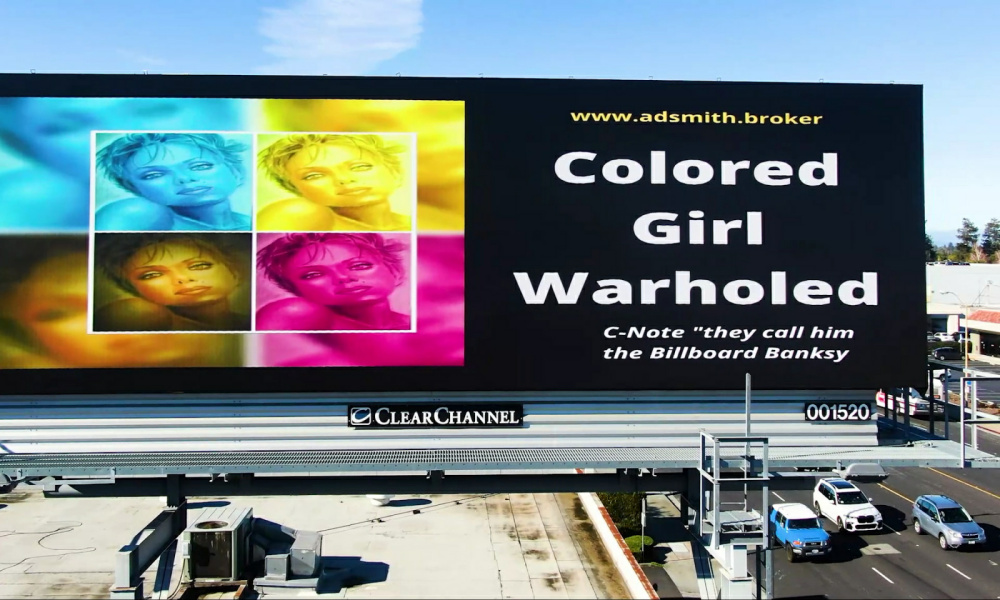
Celebrate and own a piece of art history with prints of “Colored Girl” and its impactful spin-off
Decorate your space with this powerful imagery and connect with a movement of hope, beauty, and resilience. Click below to shop now 👇
Colored Girl Warholed

Colored Girl Highlighted

Colored Girl in Blue
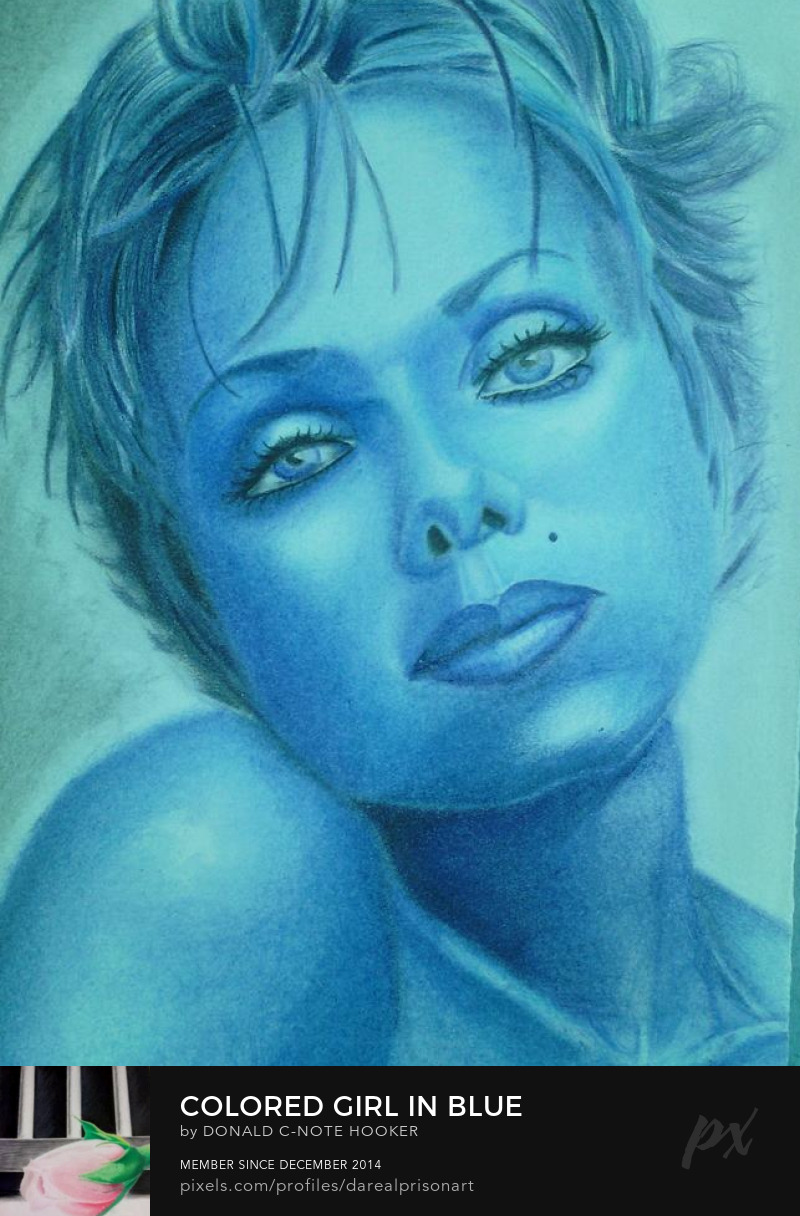
Colored Girl Mood
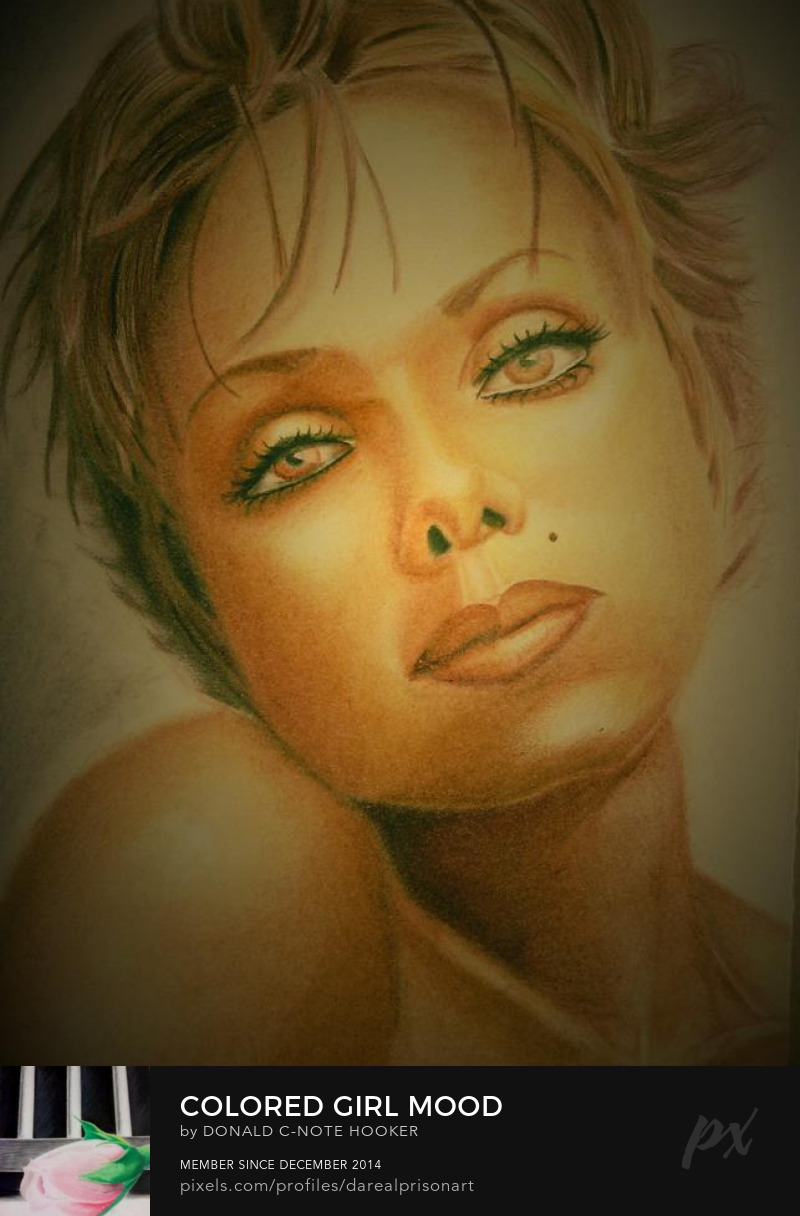
Colored Girl In Burgundy
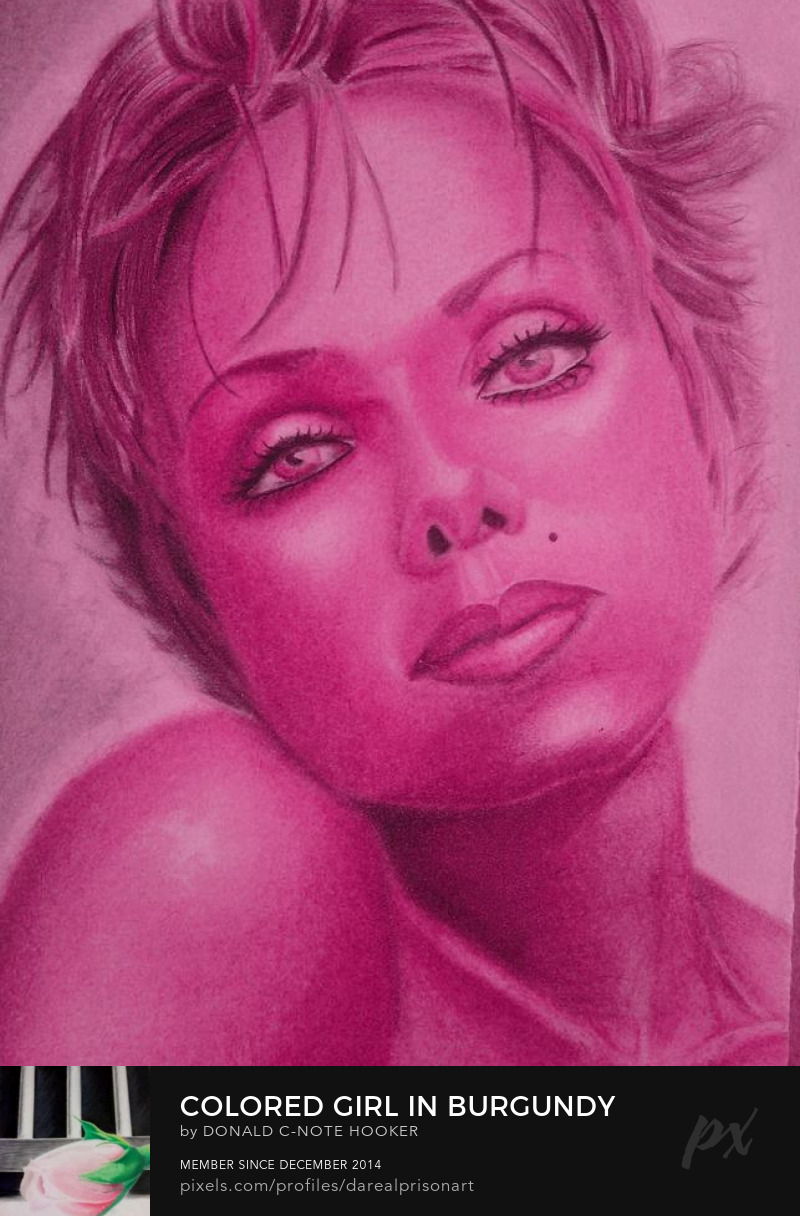
Colored Girl Bathed In Light
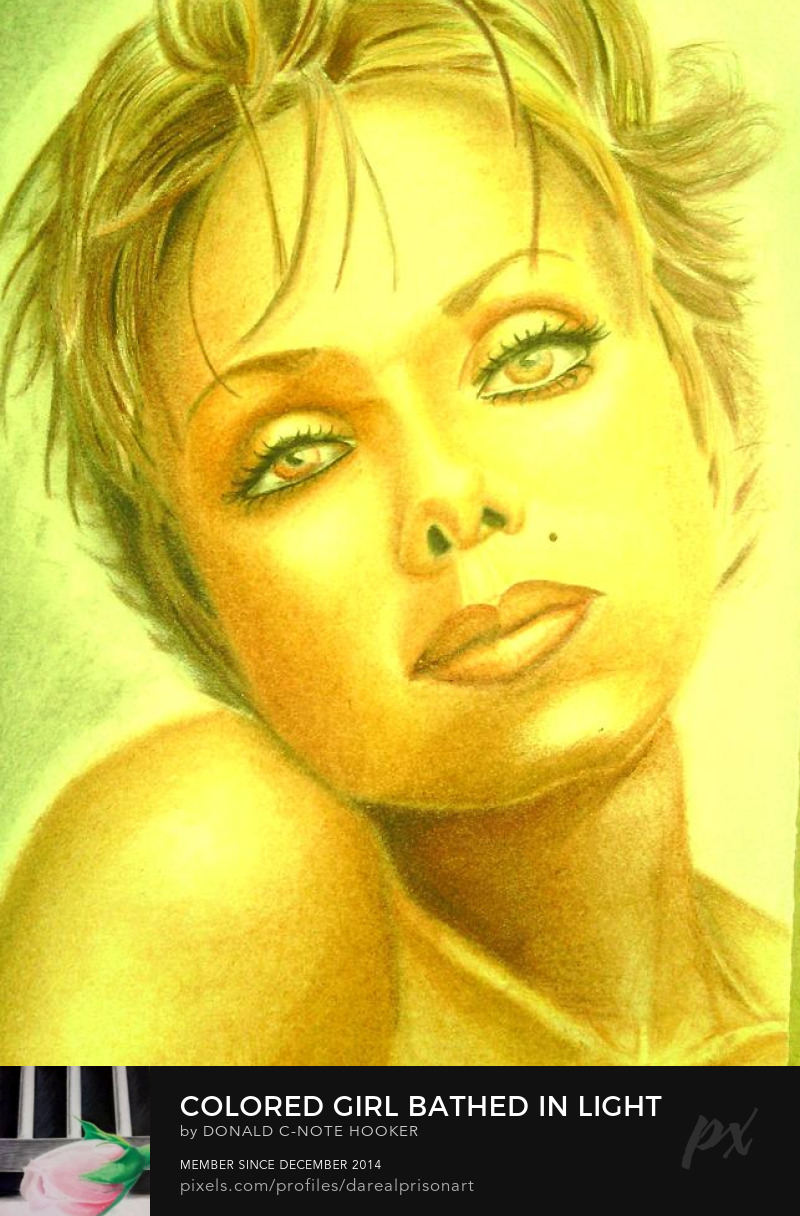
Colored Girl in Grey

Colored Girl Warholed Low Lights
